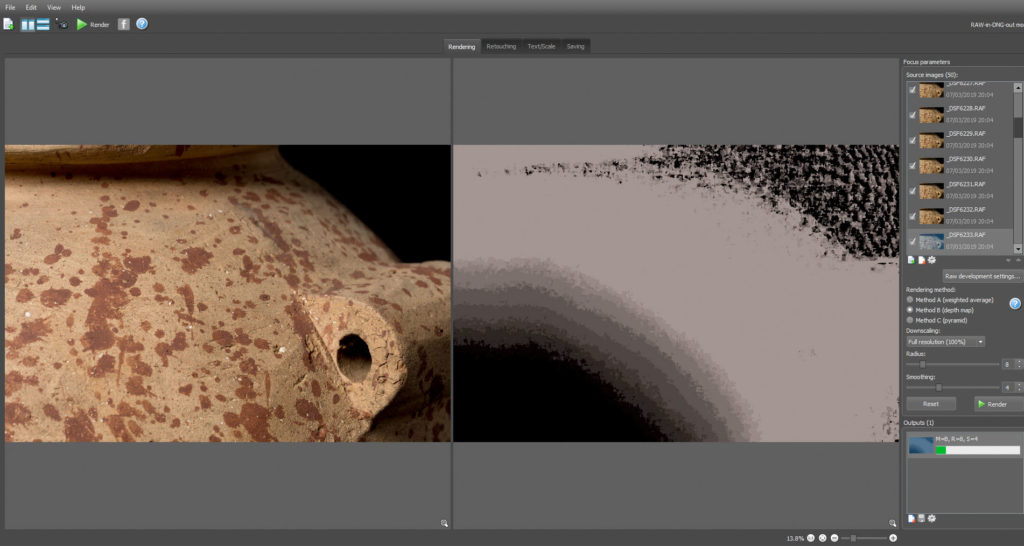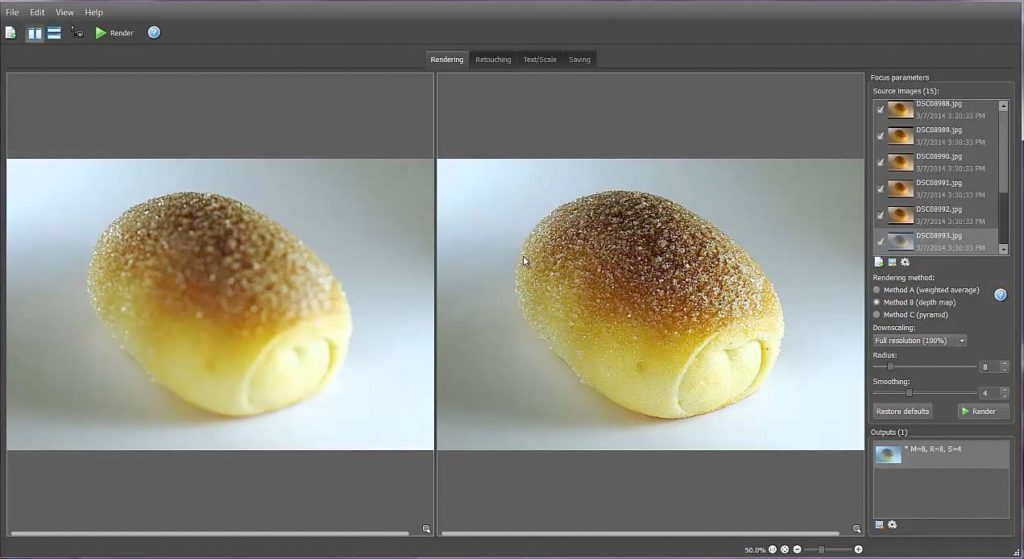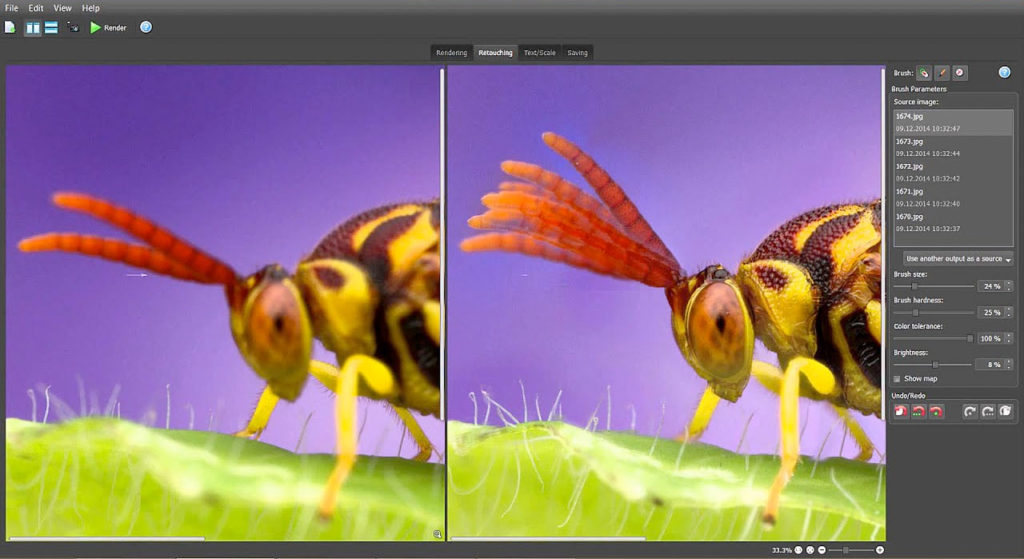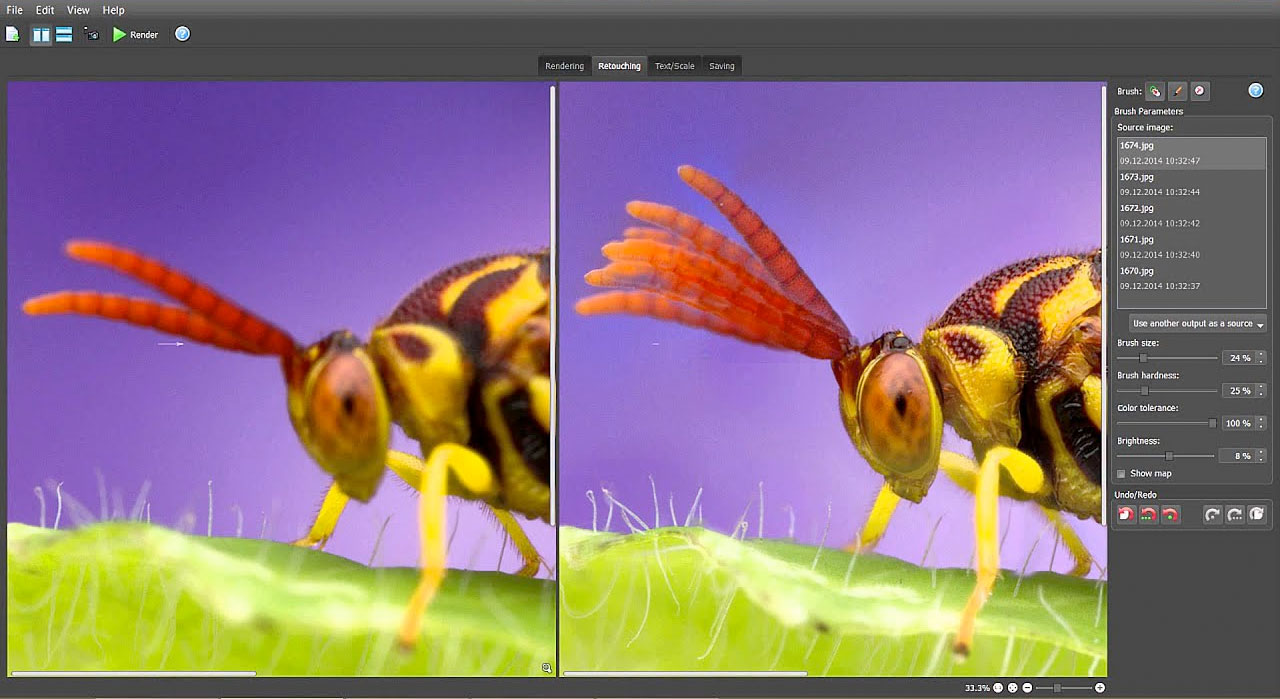Within the world of photography are many techniques that various photographers employ, both in terms of taking the actual shots and editing them afterwards with computer software. One of the most commonly used techniques is known as Focus stacking. Focus stacking is the process in which photographers create a rich and robust depth of field, often abbreviated to DOF, by doing what its name suggests: layering or stacking the photos atop one another.
Focus or Photo stacking is accomplished by shooting many shots of the same location or subject in rapid succession while switching the focus of each photo to varying points. The result is a series of crystal clear images with the focus visibly placed in separate positions, keeping everything in clear view. By doing this, the photographer is not only able to capture the subject in the foreground with remarkable detail but also all of the features of the backdrop instead of blurring them out, which is something that commonly happens with standard apertures, even ones tuned to change the focus. In order to get the final effect, photographers will often use photo stacking software to complete the process in post-production. All of these photos are then merged together in order to create a finished photograph with all of the beautiful details of both the foreground and the background standing out.
What is focus stacking software?
Focus stacking software is a program that allows photographers to stack all of their shots atop one another when they edit them, creating the deep effect that these final shots are famous for. Unlike a standard photo editing program that has catch-all features such as the wildly popular Adobe Photoshop, photo stacking software is solely focused on layering the photos together to generate the appearance of depth.

Because of this, Photo stacking software is well-equipped with tools and features that allow you to fine-tune each layer when stacking them atop one another, eliminating all blurring and bringing each layer into sharper focus. There is a wide variety of stacking software programs to choose from, each with unique interfaces and different tools to take advantage of.
What types of photography use the focus stacking technique?
Focus stacking can be employed in just about any type of photography that captures still shots. Landscape shots and macro photography are among the most common styles of photography that use this technique.
Landscape Photography
In landscape photography, this method is often employed when there is a subject that is close to the foreground, but the background is just as interesting to the point where you’d like both of those elements to be in clear focus in your photograph. The other instance of the use of Focus stacking in landscape photography is when using a telephoto lens, as they usually have a very shallow DOF, and the subject you want to photograph covers a wide distance that you want to be in clear view.
Macro Photography
Macro photography, such as taking pictures of flowers, insects and other small, detailed subjects, can help bring all of the pieces together in a crisp and sharp way that won’t leave one subject standing out more than the other.
How do you take shots for stacking?
Within this broad technique, there are many practical styles that photographers employ to get the raw images they will then use to create the stacked photos. One of the most common ways to capture the photos is to manually shift the focus. This is done by taking a photo of the various points of interest both in the foreground and the background by shifting the focus as you go, leaving behind many different photos that you can then join into one composite image. Handheld stacking in this way is common, and it doesn’t require the use of a tripod like many other methods of stack photography. Due to the risk of blurrier photos, such as when you are photographing an insect that won’t keep still, your photos will require a lot more time spent in post-production using the stacking programs, but it is still a viable technique.

A manual focusing rail is a supplemental accessory that some photographers use to make this process even cleaner and simpler. Other accessories that help to take pictures of varying focuses include ones that you attach to the camera, which will automatically take photos for you in controlled stacks. Unfortunately, it can only work on electronically controlled lenses and is therefore not ideal for everyone’s cameras.
Why use Focus stacking software?
Most of the time, the professional camera that a photographer uses to create these shots does not have the correct type of technology already embedded in it to allow them to create the stacked photos. Because of this, the photographs need to be exported to a computer or other medium with a Focus stacking software installed. In photo stacking software, photographers can then begin the process of layering the different photos atop one another and move toward the sharp, finished effect.

What makes Focus stacking software different from standard photo editing software?
Since these programs are specifically geared toward Focus stacking, they feature a suite of tools and features that allow photographers to more easily create stacked photos than they might be able to in more general, broadly sweeping programs. While the features that are present in Photo stacking apps are commonly available in those broader spectrum programs, they are usually not as sophisticated as the tools available in programs designed specifically for Photo stacking. By using these dedicated programs, you can have greater control over the outcome of your photos through all of the customization tools.
Common Features of Focus Stacking Software
- Swift rendering. Being able to review your work as you go and make changes to the sharpness during the process is important to get the best possible results. With a Photo stacking program, speed is emphasized, so you can get the photos all stacked and ready to go and then make changes to the end result swiftly.
- Batch processing. Unlike a traditional program, with photo stacking software, you can upload many photos at once directly into the program to begin stacking them up. This is important especially if you take more than just a handful of photos at one time and instead have dozens to be sure you got the focus points you wanted. Uploading them all at once and then processing them together in this way can help you save plenty of time and effort.
- Customization. As mentioned, these programs tend to boast tools that are far more sophisticated in the way of Image stacking. Because of this, you have access to smoothing tools and other features to really help hone in on all of the details and make them stand out no matter if they are in the background or foreground, which is the point of Focus stacking.
- Detail preservation. Because the details are so important in this style of photography, the programs put emphasis on keeping them intact. When you stack photos in a broader photo editing program like Photoshop, you run the risk of the photos not stacking as smoothly and as seamlessly as you could get them to in a Image stacking program.
- Automatic stacking. In programs that are designed to handle a wide variety of photographic editing, you might not be given the option to stack all of them at once and may have to instead do so by hand. This runs the risk of human error, leaving you with photo layers that aren’t lined up perfectly and therefore reduces the visual impact of the final product. In Focus stacking software, there usually is an option that allows you to set the parameters in the photo with just a few simple clicks and then it will take over for you, automatically combining them and letting you edit the final result.
- Clean interfaces. Since Focus stacking programs focus almost solely on the stacking features, you won’t have to navigate sidebars and menus that are geared toward other aspects of photography editing. This allows you to easily locate the features and tools you want to utilize with less time searching for the tool. Even if the user interface is one that has a slight learning curve, you’ll still be able to overcome the obstacle of getting used to the interface much sooner than if you were dealing with a clunkier, more expansive program with features that are not needed for your type of work.
Final Thoughts
Focus stacking is a popular photography technique across a number of photography styles, able to keep the subjects both in the foreground and background in clear focus on the Images. Those who are detail oriented and want to capture every subtle thing in the frame of the Image with plenty of depth will benefit from using Focus stacking software that allows them to layer all of the many photos taken of a subject into one flawless, seamless, composite image.
